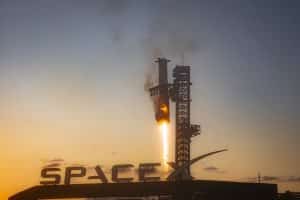- 🚀 Elon Musk predicts that a Trump White House would accelerate SpaceX’s Starship program by reducing overregulation.
- 🌌 SpaceX aims to conduct unmanned Mars missions within the next few years, taking advantage of planetary alignments.
- 🗓️ Musk maintains a timeline for Mars missions, with first landings targeted for 2026 and human missions by 2028.
- ⚖️ Overregulation is cited as the primary obstacle for SpaceX’s progress, often delaying launch permits.
- ✏️ Musk criticized the current regulatory environment, suggesting it stifles large-scale projects.
- 📄 SpaceX expressed frustration with regulatory paperwork, pointing out it takes longer than licensing rockets.
Space exploration has always been a frontier characterized by innovation and ambition. In recent conversations, SpaceX CEO Elon Musk has suggested that a Trump-led U.S. administration could significantly accelerate the development and deployment of SpaceX’s Starship by reducing what he describes as “overregulation.” Let’s delve into how this could unfold and what it means for the future of Martian exploration.
Understanding the Mars Mission Timeline
SpaceX has set ambitious goals for reaching Mars, with the timeline designed to align with the positioning of Earth and Mars, which happens every 26 months. Here’s a breakdown of what SpaceX envisions:
- Unmanned Missions by 2026:
- SpaceX plans to launch its first unmanned Starship missions to Mars in 2026, using the planetary alignment to optimize flight paths and energy consumption.
- Human Missions by 2028:
- By 2028, Musk envisions sending astronauts to Mars, taking the first steps towards a multiplanetary human civilization.
The Role of Overregulation
Elon Musk’s Criticism
Elon Musk has been vocal about the challenges posed by regulatory constraints. According to him, current regulatory practices stymie progress by imposing lengthy approval processes, which take longer than constructing the rockets themselves. Here’s how overregulation impacts SpaceX:
- Delayed Launches:
- Regulatory bottlenecks mean that obtaining launch permits can become a hurdle, causing significant delays in mission timelines.
- Economic Impact:
- Prolonged bureaucratic processes can inflate costs and impact financial planning for large-scale projects.
Why a Trump White House?
Musk believes a Trump administration could ease these regulatory challenges based on previous experiences and policy directions. His optimism is built on:
- Regulatory Reform:
- Trump’s administration was known for prioritizing deregulation across various industries, which Musk hopes would extend to aerospace operations under a possible future presidency.
- Focus on Space:
- Space has been a notable focus area, with previous initiatives like the Artemis program aiming to propel American interests in space exploration.
Implications and Opinions
While Musk’s perspective highlights potential regulatory reforms, it’s essential to evaluate:
- Balanced Regulation:
- While overregulation is a concern, balanced oversight is crucial to ensure safety and international compliance.
- Political Influences on Space Exploration:
- Space policy is highly susceptible to shifts in political leadership, requiring robust bipartisan support to sustain long-term projects.
Conclusion
SpaceX’s aspirations to establish a human presence on Mars are monumental. Reducing bureaucratic red tape could indeed accelerate these endeavors, as envisioned by Elon Musk. However, maintaining safe, ethical, and internationally cooperative standards is equally important. Whether a Trump presidency would be the catalyst Musk hopes for remains a topic of debate but poses interesting considerations for the future of human spaceflight.





